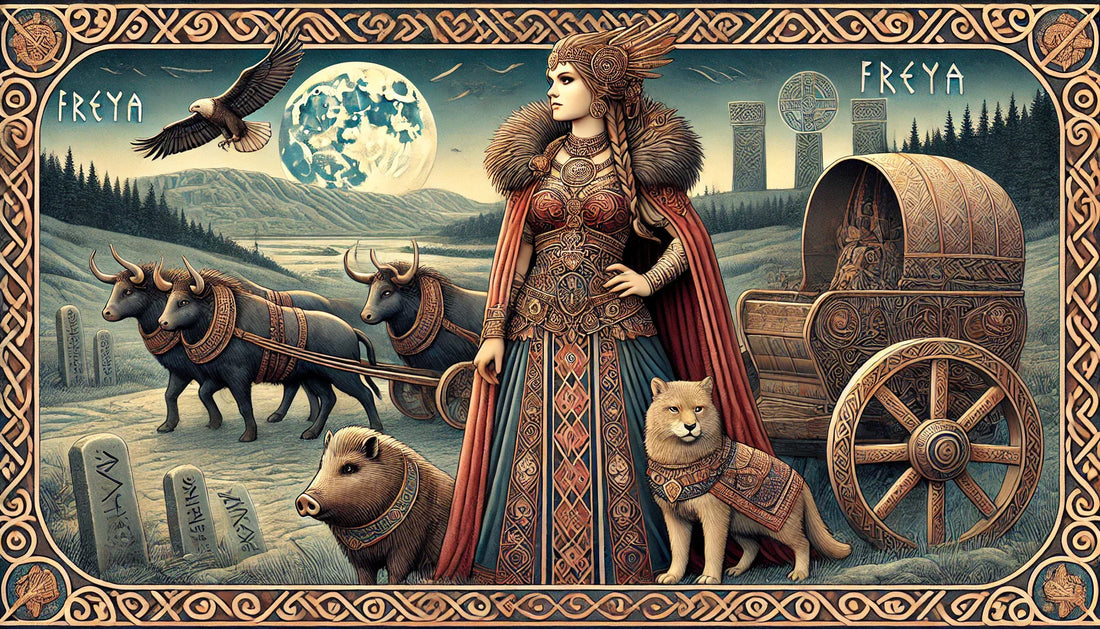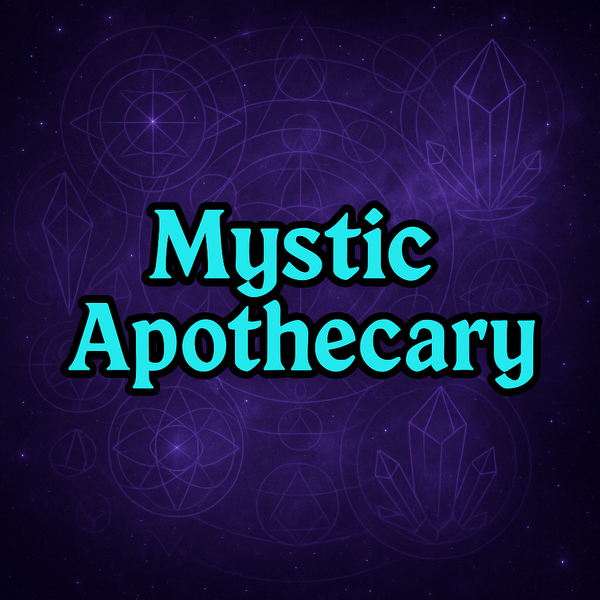
Freya: The Norse Goddess of Love, Beauty, and War
Cody ManesShare
Embracing the Duality of Freya
Freya, one of the most celebrated deities in Norse mythology, embodies a fascinating duality as the goddess of love, beauty, fertility, and fate. As a member of the Vanir, a group of gods associated with nature and prosperity, Freya bridges the realms of life and death, showcasing her multifaceted influence. Revered for her strength, compassion, and enigmatic presence, Freya’s stories continue to inspire those seeking love, courage, and a connection to the natural world.
Freya’s name translates to "Lady," reflecting her prominence and respect among the Norse pantheon. She is often depicted riding her chariot pulled by two large cats or soaring through the skies on her falcon cloak, a symbol of freedom and power. This blog explores Freya’s origins, her domains, and her enduring legacy in modern spirituality.
Freya in Norse Mythology
Freya’s origins lie in the Vanir, a group of gods associated with fertility, prosperity, and the natural world. Following a truce between the Vanir and the Aesir, the gods of war and order, Freya, along with her father Njord and brother Freyr, was sent to live among the Aesir as part of a hostage exchange meant to establish peace. This union symbolizes her dual nature, blending themes of love and fate, creation and destruction.
As the goddess of love and beauty, Freya presides over matters of the heart, romance, and fertility. She is also a skilled practitioner of seidr, a form of Norse magic involving prophecy and manipulation of fate. This ability underscores her role as a guide for those seeking insight and empowerment.
Freya’s association with battle and death is equally profound. She receives half of the fallen warriors in battle, who join her in Fólkvangr, her heavenly field, while the other half go to Odin in Valhalla. However, unlike Odin, Freya is not depicted as a war leader. Instead, her connection to death emphasizes her influence over fate and the transitions between life and the afterlife.
Freya’s myths also showcase her deep connections to nature and her ability to inspire transformation. From her search for her lost husband, Odr, to her dealings with the dwarves to obtain the Brísingamen necklace, Freya’s stories highlight her determination, independence, and resourcefulness. While little is known about Odr, some theories suggest he may be another name for Odin, though this remains speculative.
Symbols and Sacred Items of Freya
Freya’s symbols and sacred items reveal her complex nature and the breadth of her influence. Chief among these is Brísingamen, her renowned necklace crafted by dwarves. Brísingamen symbolizes her connection to fertility, wealth, and divine beauty, though it is not necessarily the source of her power. It is often depicted as a representation of her enchanting allure and divine status.
Her falcon cloak, another iconic item, grants her the ability to shapeshift and travel swiftly between realms. This cloak embodies her freedom, power, and connection to the skies, highlighting her role as a goddess who transcends boundaries.
Freya is also associated with the boar, a symbol of fertility and strength. Her companion Hildisvíni, a golden-bristled boar, accompanies her in myths and represents abundance and protection. Additionally, the cats that pull her chariot signify independence, mystery, and the nurturing aspects of her personality. While the depiction of Freya’s chariot being pulled by two cats originates from later sources, it remains one of her most enduring symbols.
Flowers, particularly those associated with love and beauty, are also sacred to Freya. Offerings of honey, mead, and beautiful objects honor her energy and celebrate her role as a goddess of life’s pleasures and transformations.
Freya’s Role in Love and Fertility
As the goddess of love and fertility, Freya’s influence extends to matters of romance, passion, and the cycles of life. She is a patron of lovers and those seeking to deepen their emotional connections. Her energy inspires self-love and confidence, reminding individuals to embrace their desires and celebrate their inner beauty.
Freya’s fertility aspects make her a revered figure for those hoping to conceive or nurture creative endeavors. While her energy fosters growth, abundance, and the harmonious flow of life’s cycles, her brother Freyr is often more explicitly linked to fertility and prosperity. Nonetheless, she is frequently invoked in rituals to promote vitality, prosperity, and harmonious relationships.
Her connection to fertility goes beyond the physical realm, as she also nurtures ideas, dreams, and creativity. Freya’s energy encourages the fruition of goals and the courage to pursue personal aspirations with passion and dedication.
Freya’s Role in Fate and the Afterlife
Freya’s connection to death highlights her influence over fate rather than war. As a goddess who claims half of the fallen warriors for Fólkvangr, she presides over transitions between life and the afterlife. This role emphasizes her sovereignty over fate and the spiritual journeys of those who pass from the mortal realm.
While some interpretations depict her as a warrior goddess, there are no direct myths of Freya leading battles. Instead, she represents the acceptance of fate and the honor of those chosen for her hall. Her presence reminds us that strength and vulnerability coexist and that true power lies in embracing all facets of one’s being.
Freya in Modern Spirituality
Today, Freya remains a significant figure in modern paganism and Norse-inspired spiritual practices. Many followers honor her through rituals, offerings, and meditations that celebrate her diverse attributes. Common offerings to Freya include flowers, honey, mead, and items representing beauty and abundance.
Freya’s energy is especially resonant for those seeking empowerment, self-expression, and transformation. Her stories inspire individuals to navigate life’s challenges with grace and determination, finding strength in both love and adversity.
Devotees often meditate on Freya’s dual nature, inviting her guidance in matters of love, courage, and personal growth. Her connection to nature also makes her a beloved deity for those seeking harmony with the Earth and its cycles.
How to Work with Freya
To connect with Freya, consider creating an altar dedicated to her. Include symbols such as candles, flowers, and representations of her sacred animals or items like a necklace to honor Brísingamen. Meditate on her dual nature, inviting her guidance in matters of love, courage, and personal growth.
Freya’s energy is particularly potent in times of transformation or when seeking to embrace your authentic self. Invoke her presence during rituals focused on love, creativity, or empowerment, and trust in her guidance to illuminate your path.
Practices such as journaling, nature walks, or working with crystals like rose quartz and amber can enhance your connection to Freya’s energy. By aligning with her essence, you can cultivate confidence, resilience, and a deeper sense of self-awareness.
Guided by Freya’s Wisdom
Freya, the Norse goddess of love, beauty, and fate, is a powerful and multifaceted figure who continues to inspire and guide those who seek her wisdom. Her duality as a nurturer and a guide of the fallen reflects the complexities of life and the strength found in balance. Whether you seek her blessings for love, courage, or transformation, Freya offers a wellspring of inspiration and empowerment.
Explore Mystic Apothecary’s offerings to find tools and treasures that resonate with Freya’s energy. Let her timeless wisdom and enduring presence guide you on your journey of self-discovery, love, and resilience.
Ready for more? Dive into our next topic: Cupid
